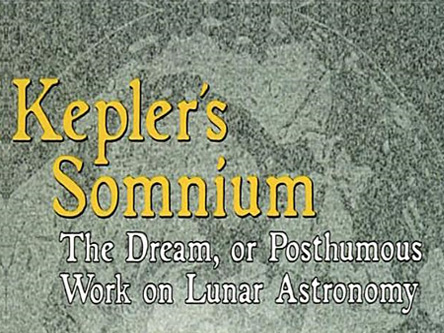In this review of Johannes Kepler’s Book Somnium – also known as “The Dream” or Kepler’s posthumous work on lunar astronomy, Samman Fattning describes the background to the book, its context and its main themes. As well as this, the reviewer adds a personal insight into the various ways to interpret difficult ideas, such as Kepler describing his mother as a witch – which later helped towards getting her locked up for witchcraft.
Kepler’s Somnium Book Review by Samman Fattning
 .
.
“In 1634, four years after his death, the most provocative and innovative of Johannes Kepler’s works was published by his son Ludwig Kepler, then a candidate for the doctorate in medicine.
In one form or another, the manuscript had been the elder Kepler’s constant companion since his student days at Tübingen University where his introduction to the heliocentric system, revived from the ancient Greeks by the Polish astronomer Nicholas Copernicus, had prompted Kepler to devote one of his required dissertations to the question: “How would the phenomena occurring in the heavens appear to an observer stationed on the moon?”
The theses propounded by Kepler at Tübingen in 1593 contained, in the words of his German biographer Max Caspar, “the first germ of a work which we shall come to know as the last of the books he published,” the Somnium or Dream.
It had been Kepler’s intent to personally supervise the publication of his manuscript and, at the time of his sudden death in 1630, six pages of the document were in type. Jacob Bartsch, Kepler’s son-in-law, undertook the task of completing publication but he, too, died suddenly before it was finished.
The project might well have been abandoned at this point had not Kepler left his widow in dire financial straits. In an attempt to assist his mother during this economic crisis, son Ludwig brought the thin volume to press in 1634. In accordance with the medieval-classical tradition—broken only by Kepler’s contemporary Galileo, who occasionally published in the vernacular—the original edition was in Latin.
Over two centuries passed before a second Latin edition was published in 1870 in volume eight of the Opera Omnia, a collection of Kepler’s works edited by Christian Frisch. This was followed in 1898 by a rather poor and quite obscure German paraphrase under the title Kepler’s Traum Von Mond by Ludwig Gunther.
Except for these two limited editions and a few surviving copies of the original printing, a seminal work in science fiction remained a literary curiosity for over three centuries, read only by those few authors with a strong interest in the new genre and possessed of the classical background required to read the work in its original Latin.
It is difficult to appreciate to any degree this last work of a great theoretician and scientist without knowing something of the circumstances surrounding its authorship, a task which spanned some thirty-seven years. For the time in which he lived Kepler’s lunar exploration is a truly remarkable and revolutionary work, and in the view of historian Lewis Mumford must be appreciated for “the audacity of the concept” as well as for its intrinsic merit as a pioneering work of science fiction… Read more.”
No Comment
You can post first response comment.